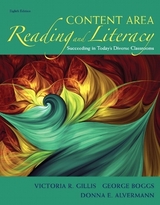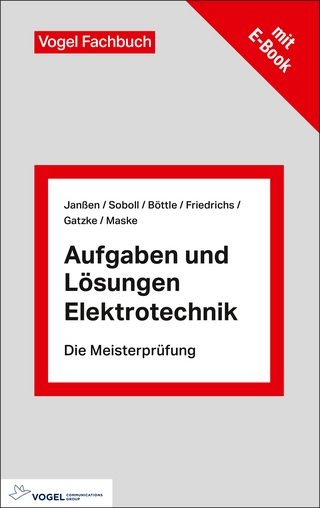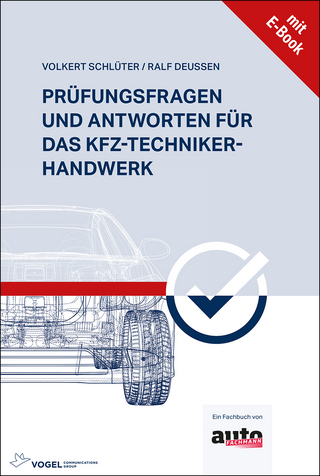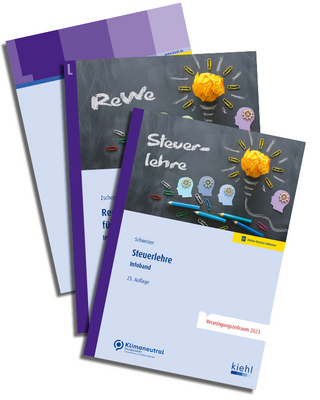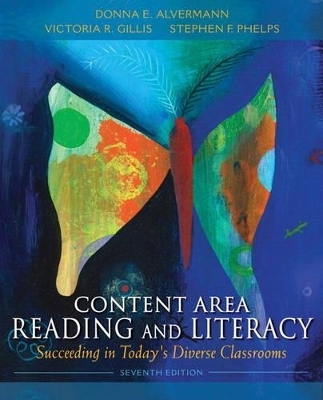
Content Area Reading and Literacy
Pearson
978-0-13-290096-6 (ISBN)
- Titel erscheint in neuer Auflage
- Artikel merken
Packages
Access codes for Pearson's MyLab & Mastering products may not be included when purchasing or renting from companies other than Pearson; check with the seller before completing your purchase.
Used or rental books
If you rent or purchase a used book with an access code, the access code may have been redeemed previously and you may have to purchase a new access code.
Access codes
Access codes that are purchased from sellers other than Pearson carry a higher risk of being either the wrong ISBN or a previously redeemed code. Check with the seller prior to purchase.
--In this authoritative, highly-respected best seller, pre- and in-service teachers get a wealth of strategies and ideas for teaching content area literacy in an era of high accountability. In-depth attention to the needs of students from diverse cultural and linguistic backgrounds is integrated throughout and the guide features a presentation of a wide scope of topics and examples, research-based information, and an accessible writing style. The ideas the trusted authors present are backed by research, tested in real classrooms, and designed to help teachers apply what is useful to their own particular disciplines, making Content Area Reading and Literacy the ideal guide to using reading, writing, and literature effectively to teach in the content areas.
0132900963 / 9780132900966 Content Area Reading and Literacy: Succeeding in Today's Diverse Classrooms Plus MyEducationLab with Pearson eText -- Access Card Package
Package consists of:
0132685191 / 9780132685191 Content Area Reading and Literacy Succeeding in Today's Diverse Classrooms
0132909103 / 9780132909105 NEW MyEducationLab with Pearson eText -- Standalone Access Card --for Content Area Reading and Literacy: Succeeding in Today's Classrooms
Donna E. Alvermann is University of Georgia-appointed Distinguished Research Professor of Language and Literacy Education. Formerly a classroom teacher in Texas and New York, her research focuses on literacy instruction across the disciplines. Her co-authored/edited books include Reconceptualizing the Literacies in Adolescents’ Lives (3rd ed.); Bridging the Literacy Achievement Gap, Grades 4–12; and Adolescents and Literacies in a Digital World. Past President of the National Reading Conference (NRC), she serves on the Adolescent Literacy Advisory Group of the Alliance for Excellent Education. She was elected to the Reading Hall of Fame in 1999, and is the recipient of NRC’s Oscar Causey Award for Outstanding Contributions to Reading Research, College Reading Association’s Laureate Award, and the American Reading Forum’s and NRC’s two service awards. In 2006, she was awarded the International Reading Association’s William S. Gray Citation of Merit. Victoria Ridgeway Gillis graduated from North Georgia College with a BS in Biology and from Emory University with an MAT in Secondary Science Education. She taught science courses including life science, chemistry, physics, and physical science in Georgia, Florida, and South Carolina. In the early 1970s, she encountered the ideas and concepts in content area reading and tried them in her classroom. Her success in using those strategies led her to return to graduate school after 20 years in the classroom to complete her Ph.D. at the University of Georgia in 1994. Victoria taught graduate and undergraduate disciplinary literacy courses at Clemson University for 20 years. She is currently Professor and Wyoming Excellence Chair in Literacy Education in the College of Education at the University of Wyoming. Stephen Phelps is professor emeritus of Elementary Education and Reading at Buffalo State College. In his 30 years at Buffalo State, he taught a wide range of literacy methods courses at the undergraduate and graduate levels and was coordinator of the graduate literacy specialist program. His research interests include the preparation of teachers to work in urban schools and sociocultural influences on literacy acquisition and achievement.
Preface
Chapter 1: Content Literacy and the Reading Process
Assumptions Underlying Content Teaching
Subject Matter
Role of the Textbook
Active and Independent Readers
Fluent Readers
Fluency with Information Technology
What It Means To Be Literate
Literate Thinking
Content Literacy
Disciplinary Literacy
The New Literacy Studies
The Reading Process
A Cognitive View
A Social Constructionist Perspective
The Role of Motivation
Summary
Suggested Readings
Chapter 2: Language, Diversity, and Culture
Language as a Vehicle for Teaching and Learning Content
Seeing Language as Social Practice
Dealing with Gendered Language in the Classroom and the Text
Diversity in Language and Learning
Second-Language Acquisition and Learning
Dialect Differences
Struggling or Reluctant Readers
Gifted and Talented Learners
Teaching and Learning in Culturally Diverse Classrooms
Today’s Globalizing Influences
Supporting Literacy among Adolescent ELLs
Integrating Language, Culture, and Content
Culturally Responsive Professional Growth
Appreciating Diversity
Involving Parents and Community
Linking School and Home
Summary
Suggested Readings
Chapter 3: Creating a Favorable Learning Environment
Affective Characteristics
Linking Content Literacy with Students’ Lives
Adaptive Instruction
Providing Choices
Forms of Grouping
Ability Grouping
Cooperative/Collaborative Learning
Cross-Age Tutoring
Discussion Groups
Reading and Writing Workshops
Creating Community with Technology and Multimedia
Technology
Multimedia
Assistive Technology
Conflict Resolution
What the Research Says
Strategies for Managing Conflict
Summary
Suggested Readings
Chapter 4: Planning for Content Literacy
Instructional Decision Making
Essential Questions and Content Objectives
Language and Literacy Objectives
Learning Materials
Student Capabilities and Needs
Evaluation and Assessment
Planning and Educational Technology
Teaching Resources on the Web
Planning Student Involvement with the Internet
Planning for New Literacies
Structured Frameworks for Content Literacy Lessons
The Learning Cycle
Reciprocal Teaching
Beyond the Daily Plan
Unit Planning
Interdisciplinary Teaching
Thematic Teaching
Summary
Suggested Readings
Chapter 5: Assessment of Students and Textbooks
Assessing Students
Tests and Testing: A Consumer Advisory
Types of Assessment
Purposes of Assessment
Assessment for Learning
Assessment of Learning
Assessment as Learning
Assessing Textbooks
Readability Formulas
Consumer Judgments (or Don’t Judge a Book by Its Cover)
Summary
Suggested Readings
Chapter 6: Preparing to Read
The Role of Prior Knowledge
Hurdles to New Learning
The Teacher’s Task
Assessing and Building Prior Knowledge
The List-Group-Label Strategy
Graphic Organizers
Reading and Listening
Writing
Activating Prior Knowledge with Prereading Strategies
Anticipation Guides
Problem-Solving Activities
K-W-L
Summary
Suggested Readings
Chapter 7: Reading to Learn
Constructing Meaning with Text
Disciplinary Differences in Constructing Meaning
Discipline-Specific Literacy Strategies
Helping Students Comprehend
Teaching Students to Be Strategic
Making Text Comprehensible
The Role of Fluency in Comprehension
Questions and Questioning
When to Ask: The Right Time and the Right Place
What to Ask: The Relation between Questions
and Answers
How to Ask: Questioning Strategies
Comprehension Guides
Three-Level Guides
Selective Reading Guides
Interactive Reading Guides
Sensing and Responding to Text Structure
Common Text Structures
Teaching about Text Structures
Comprehending Online Texts
Summary
Suggested Readings
Chapter 8: Increasing Vocabulary and Conceptual Growth
Learning Words and Concepts
How Students Learn Vocabulary
Word-Learning Tasks
Levels of Word Knowledge
Types of Vocabulary
Discipline-Specific Vocabulary Characteristics
Readers’ Resources for Learning New Words
Teaching Vocabulary: Preactive Phase
Criteria for Selecting Vocabulary
Guidelines for Vocabulary Instruction
Strategies for Introducing and Teaching Vocabulary
Developing Students’ Independence: Interactive Phase
Using Context Clues
Using Familiar Word Parts
Using Dictionaries
Vocabulary Self-Collection
Intensive Approaches for Struggling Readers
and English Language Learners
Reinforcing Vocabulary: Reflective Phase
Literal Level:
Matching Activities, Puzzles, and Games
Interpretive Level:
Categorizing Activities
Analogies
Concept Circles
Application Level: Using Vocabulary in writing
Summary
Suggested Readings
Chapter 9: Reflecting on Reading
Engaging Students through Discussion
Small-Group Discussions
Peer-Led Literature/Learning Circles
Guiding Student Reflection
Reaction Guides
Reading for Different Purposes
Discussion Webs 292
Intra-Act Procedure
General Discussion Techniques
Promoting Critical Literacy
Teaching Literacy for Critical Awareness
Incorporating Critical Media Literacy into the Curriculum
Summary
Suggested Readings
Chapter 10: Writing across the Curriculum
What Content Teachers Need to Know about Writing
Writing and Reading
The Writing Process
Social Construction of Writing
Writing and the Computer
Writing Activities for Content Areas
Writing Assignments
Learning Logs and Journals
Other Informal Writing Activities
Reviewing and Summarizing
Guiding Student Writing
Writing to Inquire
Preparing for Student Inquiry
Collecting and Organizing Information
Writing a Report
Alternatives to the Traditional Research Report
Responding to Student Writing
Peer Responses
Teacher Conferences
Formal Evaluation
Summary
Suggesting Readings
Chapter 11: Studying and Study Strategies
Prerequisites for Effective Studying
Motivation
Teachers’ Expectations
Knowledge of the Criterion Task
Domain Knowledge
Accessing Information
Information Literacy and Library Skills
Website Evaluation
Preparing for Tests
Objective Tests
Subjective Tests
Role of Homework
Using Study Strategies
Task Awareness with SQ3R
Strategy Awareness
Performance Awareness
Note-Making Strategies
Compare/Contrast Study Matrix
Internet Search Strategies
Summary
Suggesting Readings
Chapter 12: Developing Lifetime Readers: Literature in Content Area Classes
Reading among Adolescents
Who’s Reading What?
Reading in the Digital Age
Using Literature in the Content Areas
Benefits of Using Literature
Encouraging Responses to Literature
Integrating Literature into Content Areas
Uses of Literature in Content Areas
Fiction and Nonfiction for Content Areas
Developing Awareness of Diversity through Literature
Advantages of Using Multicultural Literature
Resistance to Multicultural Literature
Choosing and Using Multicultural Literature
Summary
Suggesting Readings
Appendix A Word Lover’s Booklist
Appendix B Read-Aloud Books for Content Areas
Appendix C Trade Books for Science, Math, and Social Studies
Appendix D Culturally Conscious Trade Books
Appendix E Standards for the Content Areas—Web Ready/
At a Glance
References
Name Index
Subject Index
| Erscheint lt. Verlag | 1.8.2012 |
|---|---|
| Sprache | englisch |
| Gewicht | 862 g |
| Themenwelt | Schulbuch / Wörterbuch ► Wörterbuch / Fremdsprachen |
| Sozialwissenschaften ► Pädagogik ► Berufspädagogik | |
| ISBN-10 | 0-13-290096-3 / 0132900963 |
| ISBN-13 | 978-0-13-290096-6 / 9780132900966 |
| Zustand | Neuware |
| Haben Sie eine Frage zum Produkt? |
aus dem Bereich
